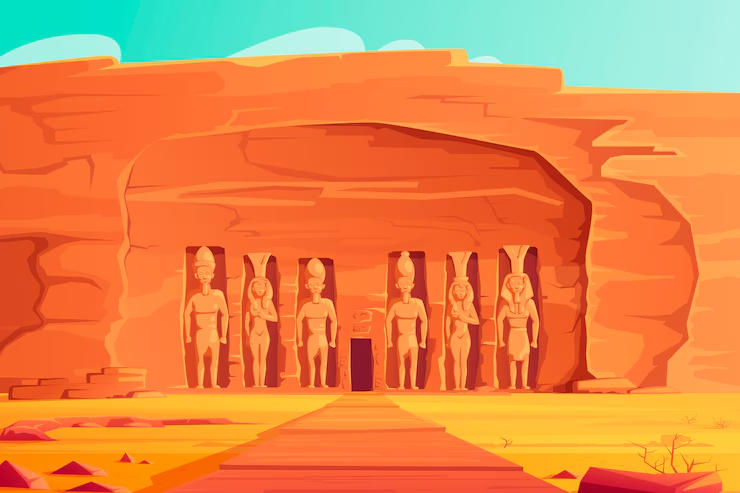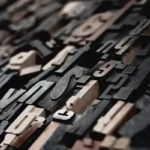Since the dawn of humanity, the urge to express, communicate, and document has driven people to create images, symbols, and forms that transcend time. Long before the written word, ancient artz served as a powerful language — telling tales of survival, beliefs, and everyday life. These early artistic creations are not just beautiful artifacts; they are windows into our ancestors’ minds, their cultures, and the foundations of human society itself.
From primitive sketches in dark caves to elaborate sculptures and paintings that adorned temples, ancient artz embodies the journey of human creativity. This article explores the fascinating world of ancient artz, uncovering how these creations reflect the evolution of human thought, culture, and civilization.
The Origins of Ancient Artz: More Than Just Marks on Walls
Long before books and computers, human beings sought ways to communicate and preserve memories. The earliest known artz date back tens of thousands of years and were often found on cave walls, rocks, and natural surfaces. These primitive drawings typically featured animals, hunting scenes, and ritualistic symbols.
These images were more than mere decoration. They functioned as storytelling tools that helped early humans convey important information, such as hunting techniques, spiritual beliefs, or social customs. In a world without written language, these visuals were a vital form of communication that connected individuals across generations.
Ancient Artz as a Reflection of Early Human Beliefs
Art has always been deeply intertwined with spirituality and ritual. In ancient times, people created artz not only to represent daily life but also to honor their gods, explain natural phenomena, or seek protection. Many ancient artz pieces are believed to have ceremonial or religious significance.
For example, the cave paintings of Lascaux in France, dating back over 17,000 years, feature vivid depictions of animals and abstract signs believed to be linked to hunting magic or spiritual rites. Similarly, the intricate carvings and frescoes found in Egyptian tombs reveal a culture obsessed with the afterlife and divine order.
These artistic expressions provide valuable insights into the belief systems and worldviews of ancient peoples, helping modern scholars understand how humans made sense of their existence.
The Evolution of Techniques in Ancient Artz
Ancient artz showcases remarkable progression in artistic techniques and materials. Early humans used natural pigments like charcoal, ochre, and clay to create vivid images on cave walls. Over time, as civilizations advanced, so did their artistic skills and tools.
In ancient Mesopotamia, artists began sculpting in stone and clay, creating detailed reliefs that told stories of kings, gods, and battles. The Egyptians mastered painting on papyrus and walls, employing precise lines and colors to narrate religious tales.
The Greeks brought artz to new heights with their sculptures emphasizing realism and human anatomy, while ancient Indians and Chinese artists developed unique styles blending spirituality with intricate designs.
This gradual refinement reflects humanity’s growing sophistication and the desire to immortalize their culture and achievements.
Ancient Artz as a Cultural Record
Beyond beauty and storytelling, ancient artz acts as a historical record, preserving moments of human life long before history was formally documented. Through these works, we learn about social structures, economies, technologies, and daily routines of ancient peoples.
For instance, pottery designs from ancient civilizations often reveal trade connections, agricultural practices, and dietary habits. Murals and sculptures illustrate clothing styles, warfare methods, and societal roles. This artistic evidence complements archaeological findings, offering a fuller picture of early human societies.
In essence, ancient artz functions as a bridge linking past generations to present-day humanity.
Famous Examples of Ancient Artz Around the World
Throughout history, many ancient artworks have captured the imagination of scholars and enthusiasts alike. The Paleolithic cave paintings of Chauvet and Altamira stun viewers with their detail and lifelike depictions. Egyptian hieroglyphics and tomb art provide insights into one of the world’s longest-lasting civilizations.
The majestic sculptures of the Olmec heads in Mesoamerica and the stunning rock carvings of Aboriginal Australians reflect diverse cultures and their unique artistic languages. The vibrant frescoes of Pompeii preserve a snapshot of Roman life frozen in time by volcanic ash.
Each piece, whether grand or humble, contributes a chapter to the global story of human creativity.
The Symbolism and Meaning Behind Ancient Artz
Ancient artz is rich with symbolism that often goes beyond the literal image. Many elements in these artworks carry hidden meanings related to identity, power, spirituality, and cosmology.
For example, the recurring motif of animals in cave paintings may symbolize strength, fertility, or clan totems. Geometric patterns might represent cycles of nature or sacred concepts. In some cultures, colors were carefully chosen to signify emotions or divine attributes.
Understanding these symbolic languages helps us decode the intentions and messages of ancient artists, revealing deeper layers of meaning woven into their work.
The Influence of Ancient Artz on Modern Creativity
The legacy of ancient artz continues to inspire contemporary artists, architects, and designers. Many modern art movements have drawn from the forms, symbols, and themes of early civilizations to create new expressions.
For instance, abstract art often echoes the geometric patterns found in prehistoric carvings, while surrealism can be traced back to the dreamlike imagery of ancient myths and rituals. Indigenous art traditions remain vibrant, preserving ancestral techniques and stories.
Moreover, museums and archaeological sites worldwide protect and celebrate ancient artz, reminding us of our shared heritage and the timeless nature of creativity.
Preserving Ancient Artz: Challenges and Efforts
Despite their importance, many ancient artz sites face threats from natural decay, human interference, and urban development. Exposure to light, moisture, and pollution can damage fragile paintings and sculptures.
Conservation efforts involve meticulous documentation, controlled environments, and sometimes digital preservation to ensure that these treasures survive for future generations. Advances in technology, such as 3D scanning and virtual reality, are opening new possibilities for studying and sharing ancient artz without physical harm.
The responsibility to protect these cultural legacies is a global one, reflecting our collective respect for human history.
Why Ancient Artz Matters Today
In a world driven by rapid technology and constant change, ancient art’z reminds us of our roots — the fundamental need to express, connect, and understand. These artworks reflect the resilience, imagination, and ingenuity of humanity through the ages.
Studying ancient art’z encourages cultural appreciation, fosters empathy for different ways of life, and enriches our identity as part of a long, continuous story. It connects us to the past and inspires us toward future creativity.
By valuing ancient art’z, we celebrate not only the art itself but the human spirit that created it.
Conclusion
Ancient art’z is more than just old drawings and carvings; it is a vibrant narrative etched into stone, clay, and canvas that tells the story of human civilization. From the first marks made by prehistoric hands to the detailed masterpieces of ancient empires, these works reveal the evolution of culture, belief, and creativity.
Understanding and preserving ancient art’z is essential to appreciating who we are and where we come from. These timeless creations connect us across millennia, reminding us that art is a universal language, continually shaping our shared human experience.
Frequently Asked Questions (FAQs)
What is ancient artz?
Ancient artz refers to the earliest forms of artistic expression created by human societies, including cave paintings, sculptures, and carvings.
Why were ancient artworks created?
They were made to communicate stories, document events, express religious beliefs, and record everyday life before written language existed.
How old is the oldest known ancient artz?
Some cave paintings and engravings date back as far as 40,000 to 45,000 years ago.
What materials did ancient artists use?
Natural pigments like charcoal, ochre, clay, and stone tools were commonly used to create ancient artworks.
How does ancient artz influence modern art?
Many modern artists draw inspiration from ancient symbols, techniques, and themes to create new and meaningful art.
How are ancient artz sites protected today?
Through conservation programs, controlled access, and advanced technologies like digital scanning to preserve and study fragile artworks.






